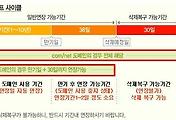반응형
1. 시스템을 부팅.
(Ctrl+Alt+Del 또는 Reset )
2. boot: linux single <------- 싱글유저 모드
3. 현재 마운트 된 파티션(장치명)을 확인
(Ctrl+Alt+Del 또는 Reset )
2. boot: linux single <------- 싱글유저 모드
3. 현재 마운트 된 파티션(장치명)을 확인
# mount
/dev/hda5 on / type ext3 (rw)
none on /proc type proc (rw)
usbdevfs on /proc/bus/usb type usbdevfs (rw)
/dev/hda1 on /boot type ext3 (rw)
none on /dev/pts type devpts (rw,gid=5,mode=620)
none on /dev/shm type tmpfs (rw)
4. 마운트된 파티션 해제
none on /proc type proc (rw)
usbdevfs on /proc/bus/usb type usbdevfs (rw)
/dev/hda1 on /boot type ext3 (rw)
none on /dev/pts type devpts (rw,gid=5,mode=620)
none on /dev/shm type tmpfs (rw)
4. 마운트된 파티션 해제
# umount /dev/sda1
5. fsck 명령으로 mount 했을 때 출력된 장치명으로 시스템 점검
5. fsck 명령으로 mount 했을 때 출력된 장치명으로 시스템 점검
단, swap 파티션은 체크하지 않해도 됨
# fsck -y /dev/sda1
# fsck -y /dev/sda2
반응형
'IT > System Engineering' 카테고리의 다른 글
| Tomcat 성능 튜닝하기 (0) | 2014.09.29 |
|---|---|
| 도메인 라이프 사이클 (0) | 2013.07.31 |
| 리눅스 본딩 (0) | 2013.05.14 |
| MySQL Error Code (0) | 2013.03.22 |
| [JAVA] JVM OutofMemory 발생시 자동 dump 생성 JVM 옵션 (0) | 2013.02.27 |

댓글